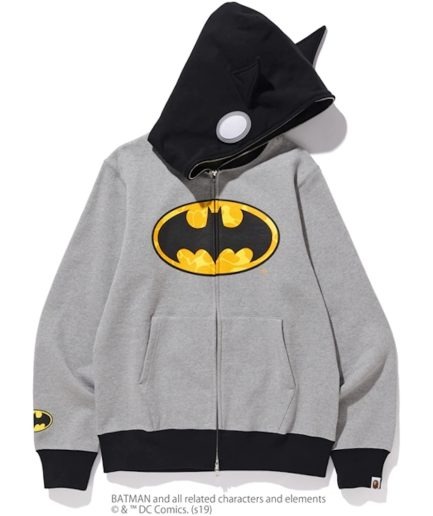Lovely Bape Clothing – The Streetwear Giant That Changed Fashion Forever

Introduction to Bape
When it comes to streetwear, one name consistently stands out: Bape Clothing, short for A Bathing Ape. Founded in the heart of Tokyo’s Harajuku district in 1993, this brand has grown from a small Japanese label into a global streetwear phenomenon. Bape isn’t just clothing—it’s a cultural statement, worn by celebrities, athletes, and fashion enthusiasts worldwide. But what exactly makes Bape so “lovely” to fans everywhere? It’s a combination of unique design, limited availability, and cultural influence.
Unlike traditional fashion houses that prioritize seasonal collections, Bape thrives on drops—exclusive, small-batch releases that sell out almost instantly. This scarcity adds to the hype, making each item feel more like a collector’s piece than just another hoodie or T-shirt. Moreover, Bape pioneered a design style that blends playful graphics, Japanese creativity, and bold streetwear aesthetics, making it impossible to ignore.
Whether you’re into streetwear or just curious about why Bape is one of the most talked-about brands in fashion, this guide will take you through its origins, evolution, signature pieces, and why people can’t get enough of Lovely Bape Clothing.
What Does Bape Stand For?
The name Bape is short for “A Bathing Ape in Lukewarm Water”, a playful reference rooted in Japanese pop culture. It refers to the idea of someone living a relaxed, luxurious lifestyle while indulging in modern excess. Essentially, it’s a cheeky nod to the younger generation’s indulgence and trend-driven habits.
This clever branding gave Bape an identity that resonated with youth culture. It wasn’t just about clothes—it was about belonging to a movement. The playful name paired with bold designs created an instant connection with young people who wanted to stand out, making Bape not just a fashion brand but a cultural lifestyle.
The Origins of A Bathing Ape
Bape was founded in 1993 by Nigo (Tomoaki Nagao), a visionary Japanese designer with a passion for hip-hop, fashion, and pop culture. At the time, Japanese streetwear wasn’t globally recognized. Nigo changed that by blending Japanese creativity with Western street culture, giving birth to something the fashion world had never seen before.
He launched the first Bape store in Harajuku, Tokyo—a neighborhood already famous for its experimental fashion scene. Nigo produced very limited quantities of clothing, often only about 50 T-shirts per week, to maintain a sense of exclusivity. This scarcity created massive demand, with fans lining up outside stores for hours just to get a piece of Bape.
From the start, Bape was rooted in exclusivity and cultural coolness. Owning a Bape hoodie or T-shirt wasn’t just about fashion—it was proof that you were plugged into the hottest streetwear culture of the time. That aura of exclusivity remains one of the brand’s strongest appeals even today.
Why Bape is Loved Worldwide
So, why has Bape captured the hearts of streetwear lovers from Tokyo to New York? The answer lies in a mix of design, exclusivity, and cultural influence.
- Unique Aesthetics: From its bold camouflage patterns to the famous Shark hoodie with its full zip-up design, Bape stands out in a crowd.
- Celebrity Endorsements: Hip-hop legends like Pharrell Williams, Kanye West, and later Travis Scott helped skyrocket Bape into global popularity.
- Scarcity: Bape doesn’t flood the market with products. Instead, it releases limited drops, making each item feel rare and valuable.
- Global Reach: Despite starting in Japan, Bape’s unique style quickly gained traction in the U.S., Europe, and beyond.
Bape isn’t just “clothing”—it’s status, exclusivity, and cultural identity all stitched into one. That’s why people across the world call it Lovely Bape Clothing.
The Evolution of Bape
From its humble beginnings in Tokyo to its status as a worldwide streetwear powerhouse, Bape’s journey is nothing short of fascinating. What started as a niche Japanese brand grew into a multi-million-dollar global label that continues to dominate the fashion industry decades later.
In the early 2000s, Bape’s popularity exploded thanks to its connection with hip-hop culture. Bape Hoodie Celebrities like Pharrell and Kanye West weren’t just wearing Bape—they were integrating it into music videos, album covers, and stage performances. This exposure turned Bape into a must-have fashion label for fans who wanted to dress like their idols.
Today, Bape has stores in major fashion capitals like New York, London, Hong Kong, and Paris. Its expansion reflects how a Japanese streetwear experiment transformed into an international fashion icon, shaping not only how people dress but also how they view fashion as a cultural statement.
Early Days in Harajuku, Tokyo
Bape’s story begins in Harajuku, Tokyo, a neighborhood famous for its bold street style and youth-driven fashion scene. In the early 1990s, Harajuku was already buzzing with creativity—vintage shops, independent designers, and experimental fashion movements dominated the streets. Into this environment stepped Nigo, who was deeply inspired by Western hip-hop culture and Japanese art.
He didn’t want to create just another fashion brand; he wanted to create something that spoke directly to youth culture. His strategy was simple yet revolutionary: produce limited quantities of each item and make it difficult to access. This exclusivity became a cornerstone of Bape’s identity. Only the “in-the-know” crowd could get their hands on the latest releases, which instantly gave Bape a cult-like following.
The early days were marked by T-shirts, hoodies, and sneakers that featured playful, eye-catching graphics. Each piece was bold, unapologetic, and unlike anything else available at the time. This helped Bape carve out its own lane in the Japanese fashion world before expanding to global markets.
For many, Harajuku is still seen as the birthplace of Lovely Bape Clothing, and even today, visiting a Bape store there feels like stepping into the origins of a fashion revolution.
Bape in the 2000s – The Hip-Hop Connection
If the 1990s were about establishing Bape in Japan, the 2000s were about taking over the world. The turning point came when hip-hop culture embraced Bape. Artists like Pharrell Williams, The Neptunes, and later Kanye West, wore Bape not just casually but as part of their public persona.
Pharrell, in particular, played a huge role in introducing Bape to the American audience. He collaborated with Nigo to launch the Billionaire Boys Club (BBC) and Ice Cream brands, which carried the same playful, street-inspired DNA as Bape. Around the same time, Kanye West was spotted in Bape’s Shark Hoodies and custom sneakers, further fueling demand.
This wasn’t just celebrity endorsement—it was cultural synergy. Hip-hop and streetwear share the same DNA: rebellion, self-expression, and exclusivity. By aligning with hip-hop artists, Bape positioned itself as more than clothing—it became a symbol of status and identity within the music industry.
By the mid-2000s, Bape had fully crossed over from being a Japanese niche brand to an international fashion powerhouse, cementing its place in streetwear history.
Global Expansion of the Brand
Following its success in Japan and its explosion in the hip-hop world, Bape went global. Stores opened in New York, London, Hong Kong, and Paris, bringing the brand to fashion capitals where it could compete with established luxury names. Each store was carefully designed to reflect Bape’s playful yet exclusive identity, often featuring vibrant camo patterns, unique interiors, and limited-edition drops that could only be found in specific locations.
This expansion introduced Bape to a wider audience while still keeping its core exclusivity strategy intact. The brand never mass-produced; instead, it continued with small drops, collaborations, and special editions. This meant that even though Bape was now available worldwide, it never lost its scarcity factor.
The global expansion also allowed Bape to collaborate with brands outside of fashion—Pepsi, Marvel, Star Wars, and even video game companies partnered with Bape to release limited-edition collections. These collaborations blurred the lines between streetwear, pop culture, and luxury, something few brands had achieved at the time.
Today, Bape stands as a truly global brand, but it hasn’t lost its Japanese roots or its reputation for being one of the most exclusive and sought-after streetwear labels in the world.
Signature Bape Designs
One of the main reasons Bape has maintained such a powerful presence in the fashion world is its unmistakable design language. If you see someone walking down the street in Bape, you’ll recognize it instantly. Let’s dive into the designs that made Bape so iconic.
The Iconic Bape Camo Print
The Bape camo pattern is perhaps the most recognizable element of the brand. Unlike traditional camouflage, which is designed to blend in, Bape’s camo was designed to stand out. It features playful, colorful variations with the signature ape head hidden within the print.
Over the years, Bape has released dozens of color variations—pink, blue, neon green, and even glow-in-the-dark versions. This versatility made the camo print adaptable to everything from hoodies and T-shirts to sneakers, bags, and even furniture.
Collectors often chase specific camo variations, and some rare versions fetch thousands of dollars on the resale market. The camo isn’t just a design—it’s a badge of authenticity for streetwear lovers who want to show they own a piece of Bape history.
Shark Hoodies – A Streetwear Statement
Perhaps the most famous Bape item ever created is the Shark Hoodie. First released in the mid-2000s, this hoodie features a full zip that extends over the hood, revealing a shark face with sharp teeth. On the sides, bold letters like “WGM” (World Gone Mad) or “BAPE” are embroidered in bright, contrasting colors.
The Shark Hoodie became a streetwear status symbol. Celebrities wore it in music videos, fans lined up for hours just to buy one, and resale prices skyrocketed. What made it special was the combination of bold design and exclusivity—it wasn’t just another hoodie; it was a piece of wearable art.
Even today, the Shark Hoodie remains one of the most sought-after Bape items, symbolizing everything the brand stands for: boldness, creativity, and exclusivity.
Collaborations with Top Brands
Another reason Bape stays relevant is its legendary collaborations. Nigo understood early on that collaborating with other brands would keep Bape fresh and exciting. Over the years, Bape has teamed up with:
- Nike & Adidas – creating limited sneaker releases that sell out instantly.
- Supreme – combining two of the most powerful streetwear names in history.
- Marvel, DC Comics, and Star Wars – merging pop culture with fashion.
- Coca-Cola, Pepsi, and other lifestyle brands – proving Bape could go beyond clothing.
These collaborations created must-have collector’s items and brought Bape into mainstream awareness without sacrificing its exclusivity.
Why People Love Bape Clothing
Bape isn’t just loved—it’s worshiped in the streetwear community. But why exactly do people obsess over it so much? The reasons can be broken down into exclusivity, quality, and cultural influence.
Exclusivity and Limited Drops
Bape has always been about scarcity. By releasing small drops instead of mass-producing, the brand ensures that demand always outweighs supply. This scarcity creates a sense of urgency—fans feel like they have to buy now or miss out forever. This “drop culture” was revolutionary at the time and inspired countless other brands, from Supreme to Off-White, to follow the same model. Owning a piece of Bape isn’t just about clothing—it’s about owning a piece of history that others may never get again.
Quality and Craftsmanship
Another reason Bape is beloved is its high-quality craftsmanship. Unlike fast fashion brands, Bape produces clothing that’s meant to last. The fabrics are durable, the stitching is precise, and the designs are detailed. Each piece feels like a premium product, which justifies its high price tag to many buyers. Collectors know that Bape isn’t just about hype—it’s about investment. Many pieces retain or even increase their value over time, especially rare collaborations and limited releases.
The Celebrity Effect
Lastly, Bape’s popularity skyrocketed because of its celebrity following. From Pharrell and Kanye West to modern icons like Travis Scott and Drake, celebrities have consistently shown love for Bape. When fans see their favorite stars wearing a Bape hoodie or sneakers, they want to replicate that look. This celebrity effect not only expanded Bape’s reach but also solidified its reputation as a cultural staple in music, sports, and entertainment. Shop Now


